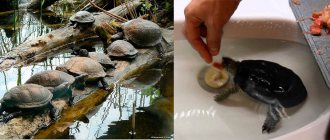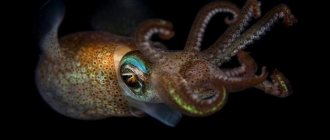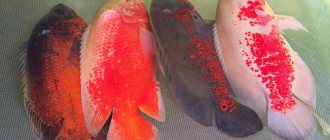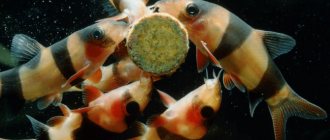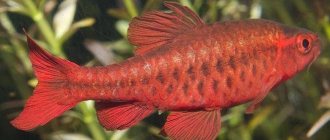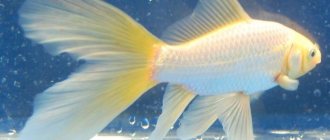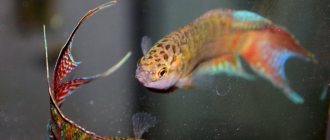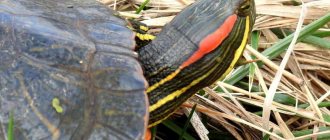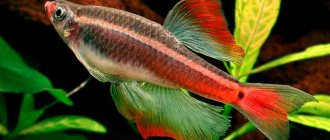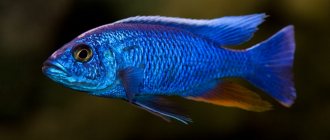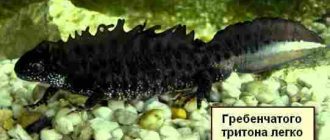Red-eared turtles have rightfully won the title of favorite pet. A fairly large number of breeders purchase such a reptile and want to get offspring from it. However, breeding red-eared turtles at home involves a certain amount of knowledge that the owner must master before the little turtles are born.
Since domestic turtles do not show much interest in producing offspring, babies are extremely rare in captivity. Despite this, in most cases, it is the breeder who cannot create the right climate and conditions to begin the breeding process. Since it is unlikely that your pets themselves will want to create offspring without outside intervention, the owner needs to make a lot of efforts, thanks to which babies will appear in your turtle family.
Description
The red-eared turtle is a medium-sized reptile, which, depending on its gender, has a length of the upper part of the shell (carapace) from eighteen to thirty centimeters. The body of the reptile is hidden in a reliable and durable shell, which consists of bone covered with horny plates. The thin long tail, head and limbs remain outside and, in case of danger, are retracted under the armored shields.
The head of the individual is covered with a hard horny covering, which successfully compensates for its lack of teeth, forming sharp edges on the edge of the jaws. The red-eared slider spends most of its life in the water, having webbed swimmers on its hind legs and flattened forelimbs.
The red-eared turtle has undeveloped vocal cords and therefore can snort in excitement and hiss in defense. The individual has a fairly developed sense of smell and vision, and its eyes, which are located on the sides, are reliably protected by movable eyelids. Despite the underdeveloped hearing, the reptiles navigate well by it and hide in the water at any rustle.
In the area of the reptile's ears there are spots or stripes of red color, and in some of its subspecies they can be yellow. Nature has generously endowed the Red-eared turtle with an unusual and amazing shell pattern, the continuation of which can be seen on its limbs and head in the form of green and white wavy spots and stripes. The oval lower part of the shell (plastron) of the individual is dark in color with yellow lines. Young carapace has a bright green color, which becomes yellow-brown or olive with age. The life expectancy of the reptile is thirty years.
What do newborn turtles look like?
A baby red-eared turtle at birth has a body size of 2.5-3 cm, a baby Central Asian turtle is born about 3-3.5 cm in length. If there were 2 embryos in one egg, the size and weight of the twins will be several times less than that of their brothers.
Turtle eggs hatch into small turtles with a round body shape that resembles the silhouette of an egg. An adult turtle and its young differ from each other only in body size. Newborn babies, immediately after birth, are fully prepared for independent existence and do not need maternal care.
The birth of turtles is accompanied by a large loss of energy, and newborns will begin to feed in a few weeks or even months. The offspring of turtles are born with a yolk sac on their stomach, thanks to which the babies can go without food for quite a long time. The yolk sac is the size of a cherry and is yellow in color; some baby red-eared turtles literally hug their bright bladder. It is prohibited to tear or forcefully release a baby turtle from its yolk sac; these manipulations can kill the newborn reptile.
Within 2-5 days the bubble will heal on its own. If turtles are born at home, to avoid damage to the yolk sac, you can bandage it to the underside of the shell with a gauze pad. Once the bubble has resolved, the gauze can be removed. Turtles are born with a transverse fold on the abdomen, which is associated with the position of the embryo in the egg. Within a few days of life, the groove is successfully overgrown.
Features of character and lifestyle
Photo: Large red-eared turtle
Red-eared turtles live from 20 to 30 years, but can live more than 40 years. The quality of their habitat has a strong influence on life expectancy and well-being. Turtles spend almost all their time in the water, but since they are cold-blooded reptiles, they leave the water to sunbathe in order to regulate their body temperature. They absorb heat more efficiently when their limbs are extended outward.
Red whales do not hibernate, but plunge into a kind of suspended animation. When turtles become less active, they sometimes come to the surface for food or air. In the wild, turtles spend the winter at the bottom of ponds or shallow lakes. They generally become inactive in October when temperatures drop below 10°C.
During this time, turtles enter a state of stupor, during which they do not eat or defecate, remain almost motionless, and their breathing rate drops. Individuals are most often found underwater, but have also been found under rocks, in hollow stumps and sloping banks. In warmer climates, they can become active in winter and come to the surface to swim. When the temperature begins to drop, they quickly return to a state of stupor.
On a note! Red-eared turtles are caught for food from early March to late April.
During brumation, the species can survive anaerobically (without air) for several weeks. The turtles' metabolic rate drops sharply during this time, and heart rate and cardiac output are reduced by 80% to minimize energy requirements.
The most common breeds of aquarium turtles
Such pets need comfortable conditions, high-quality and regular care, and an equipped tank. However, even such needs do not scare off owners - many decide to have such reptiles. But how can you choose the most suitable pet among the abundance of breeds, because they differ in size, behavior, character? It is worth considering the most popular representatives.
Red-eared (yellow-bellied) turtle
In an aquarium, these animals, whose homeland is North America, can live for a quarter of a century. Reptiles are colored greenish, and behind each of the eyes there are stripes of a bright, scarlet hue. Males have a long, compacted tail, elongated claws on their forelimbs, and their dorsal shield is smaller than that of females. The plastorn is an abdominal shield, of a concave type, while in females it is straight.
The red-eared turtle is an aquatic species, so it needs a tank of water. Young individuals prefer animal food - they eat fish, shellfish, and insects. As they grow older, their gastronomic preferences change, and reptiles switch to a plant-based diet.
It is recommended to feed aquarium pets variedly, giving them foods containing plant and animal proteins. To keep the tank clean much longer, it is advisable to give your pet food outside of it. Naturally, the meal will require more time and attention from the owner.
For a comfortable life for an exotic pet, you need to purchase an aquarium with a volume of at least 150 liters. Only in a spacious tank will the red-bellied turtle feel good. A quarter of the container should be occupied by a sloping bank; it should be installed in such a way that the earthen embankment does not end up in the water.
Water should be prepared in advance: cleaned, settled, temperature 20°-22°C. It is replaced every week; filtering is not necessary, but acceptable. It is advisable to equip the tank with an additional source of ultraviolet rays and illumination.
In the summer, when the aquarium is constantly illuminated by sunlight, red-eared turtles begin to reproduce. It is recommended to place duckweed and filamentous algae in the tank.
Emys orbicularis (European swamp)
The reptile has a small carapace, the length of which is approximately 20 cm. But the limbs have large nail plates and webbed feet. Almost the entire body and shell are covered with small spots, lighter than the main color.
They choose reservoirs with fresh water and a bottom covered with a layer of silt as their habitat. They hunt mainly in the daytime, feeding on various small animals. Among domestic turtles, the marsh turtle is distinguished by its decent size - the weight of individuals reaches 2 kg.
The reptile has an elongated tail, which helps it regulate its trajectory while moving in the water. In adult turtles, the shell becomes dark - brownish, brownish or deep olive, with yellow specks on the main background. Eyes – yellow or orange.
These reptiles are capable of staying under water for a long time, being excellent swimmers. Almost any live food can be used as food - from larvae to small crustaceans and fish. You can give food yourself or place it on a special hanging feeder. Swamp turtles swallow food only while in the water. You cannot include minced meat in your pet's diet.
European turtles are kept in spacious 150-200-liter aquariums, in which equipment is installed like “artificial islands” that form a coastline. Medium and large stones are used as soil.
Water can be filtered. Suitable water temperature varies from 25° to 28°C, the depth should be no more than 20 cm. In addition, the tank must be equipped with additional devices:
- heating lamps that do not provide light;
- UV lamp;
- low-pressure mercury gas-discharge lighting device (fluorescent);
- thermometer;
- aquafilter;
- an aquarium heater with which you can regulate the water temperature.
If a pet is provided with proper care, its life expectancy can be about three decades. In addition to these popular aquarium inhabitants, there are several breeds of smaller turtles that are kept as pets.
Appearance and features
Photo: Animal red-eared turtle
The length of the shell of this type of turtle can reach 40 cm, but the average length ranges from 12.5 to 28 cm. Females are usually larger than males. Their shell is divided into two sections: the upper or dorsal carapace (carapace) + the lower, abdominal (plastron).
The upper shell consists of:
- vertebral shields, which form the central elevated part;
- pleural shields located around the vertebral shields;
- edge shields.
The scutes are bony keratin elements. The carapace is oval and flattened (especially in men). The color of the shell changes depending on the age of the turtle. The carapace usually has a dark green background with light or dark markings. In young or newly hatched specimens, this is the color of the green foliage, which gradually darkens in mature specimens. Until it turns dark green and then changes shade between brown and olive green.
The plastron is always light yellow with dark, paired, irregular markings in the center of the shields. The head, legs and tail are green with thin, irregularly shaped yellow lines. The entire shell is covered with stripes and markings that help in camouflage.
Interesting fact! The animal is a poikilotherm, that is, it cannot independently regulate its body temperature and is completely dependent on the temperature of the environment. For this reason, they need to sunbathe frequently to stay warm and maintain their body temperature.
Turtles have a complete skeletal system with partially webbed feet that help them swim. The red stripe on each side of the head distinguished the red-eared slider from other species and became part of the name, as the stripe is located behind the eyes where their (outer) ears would be.
These stripes may lose their color over time. Some individuals may have a small marking of the same color on the top of the head. In addition, they do not have a visible outer ear or external auditory canal. Instead, there is a middle ear, completely covered with a cartilaginous tympanic disc.
Feeding your pet
The lifespan of a red-eared slider, as well as the ability to mate, largely depend on proper feeding. Turtle breeders know that only well-fed reptiles are able to reproduce. Turtles are omnivores, and therefore must eat a varied diet, which is necessary to maintain their health. To do this, you need to know what red-eared turtles eat. Their diet may consist of the following components:
- special dry food for turtles;
- food for aquarium fish;
- chopped vegetables;
- fish;
- shellfish;
- invertebrates;
- meat.
For turtles, live food is a great treat. It should be given only once every 10 days, otherwise the animal may become obese. The diet of the red-eared turtle must be controlled, because at home it is prone to obesity.
Artificial food, which is sold in pet stores, contains all the substances necessary for animal health in an optimal ratio. The increased protein content allows you to significantly limit food portions for the turtle, which makes it easier to keep the reservoir clean.
Watch a video about feeding turtles.
Reptiles constantly need plant food. For adult pets, ¾ of the diet should consist of plant foods. In addition to vegetables, turtles are also given aquarium plants. Live food for red-eared turtles is small fish, insects, snails and worms. For this reason, the red-eared turtle is not suitable for keeping in an aquarium with fish. Small fish are regarded by the reptile as tasty food and will be swallowed within one day. Red-eared turtles do not live peacefully with large fish. The reptiles' neighbors will bite off pieces from them, and the fish will die from injuries.
The feeding regimen is determined depending on the size of the animal. Turtles grow rapidly until they are one year old, and therefore must receive food daily. Individuals older than 12 months must be fed plant food every day, but balanced artificial food is given once every 2 days. It also affects the feeding regimen and feed composition. The manufacturer places all the information on the contents of the package, as well as feeding recommendations on it. Compliance with nutritional rules will ensure that you do not overfeed your red-eared cat and at the same time do not leave it hungry.
Where does the red-eared turtle live?
Photo: Little red-eared turtle
Habitats are in the Mississippi River and Gulf of Mexico, as well as in the warm climate of the southeastern United States. Their home territories range from southeastern Colorado to Virginia and Florida. In the wild, red-eared turtles inhabit areas with sources of calm, warm water: ponds, lakes, swamps, streams and slow-moving rivers.
They live where they can easily get out of the water, climb onto rocks or tree trunks to warm themselves in the sun. They often sunbathe in a group or even on each other. These turtles in the wild always stay close to water unless they are searching for new habitat or laying eggs.
Due to their popularity as pets, red whales have been released or escaped into the wild in many parts of the world. Wild populations are now found in Australia, Europe, Great Britain, South Africa, the Caribbean, Israel, Bahrain, the Mariana Islands, Guam, and Southeast and Far East Asia.
An invasive species has a negative impact on the ecosystems it occupies because it has certain advantages over native inhabitants, such as a lower age at maturity and higher fertility rates. They transmit diseases and displace other turtle species with which they compete for food and breeding space.
Mating process in nature
First of all, it should be clarified that the genital organs of turtles are located in the tail. Therefore, the male approaches the chosen one from behind and crawls onto her back with the front part of his body. He adapts his tail under hers, directing the sexual organ to the right place.
At the end of the action, the male emits a “victory cry.” And let only his chosen one hear it, but this is the song of a winner who has achieved his goal. The female also responds to him with a “yelp.” This is how turtles mate in nature.
Red-eared slider: care
Red-eared turtles can be kept in groups or alone. But in any case, it is necessary to keep in mind that for one individual you need an aquaterrarium with a volume of at least 110-130 liters . You should not assemble a group of only males. Otherwise, there will be constant battles for territory. Also, all individuals must be the same size and age. Caring for an animal at home is generally not accompanied by any serious difficulties. However, for the normal development of a turtle you need to know some important points.
How long does pregnancy last
After successful fertilization, pregnancy of red-eared turtles occurs, which lasts about 60 days. When keeping a male together, it is better to delay this period in order to avoid harm to the health of the mother and future turtles. The female is transferred to enhanced nutrition. The reptile must receive calcium, phosphorus and vitamins. Towards the end of pregnancy, the female will pick up food or refuse to eat at all, which should not be a reason for panic.
In their natural habitat, freshwater reptiles come to land to lay eggs in heated sand. For a pregnant turtle kept at home, it is recommended to place a deep container filled with 10-15 cm of sand on the shore of the aquarium. The animal can lay eggs in the water, but if the owner does not get them out within an hour, the embryos will die from lack of air.
Immediately before laying, the pregnant turtle begins to dig the nest with its hind limbs, forming a deep hole with a perfectly level entrance. Laying eggs lasts 5-20 minutes, the female straightens each egg with her hind legs. The eggs of red-eared turtles look like balls with a diameter of 3-4 cm with a soft leathery shell; in one clutch the animal can lay about 5-20 eggs.
What should an aquaterrarium be like for a red-eared turtle?
It should be quite long, but at the same time not wide and low. Volume not less than 120 liters. The water level must match the proportions of your turtle's shell so that it can turn over. A small bank should be installed near the aquarium. Maintain the water temperature within 25 degrees, on land - 31 - 33 degrees. To keep the temperature at the same level, a special heater must be provided.
The water must be changed and cleaned depending on the degree of contamination. But you can also use a special filter. For young turtles, external is preferable, and for adults, only internal. An ultraviolet lamp will not hurt, but it should not be located low, the approximate height is 25 cm, so that the turtle does not get a burn to the eyes. Another option for arranging an aquaterrarium is an incandescent lamp with the same requirements. They both need to switch off at night.
If the weather outside is nice and warm, try to take the turtles out to bask more often. But remember that the first time you do not need to keep it in the sun for more than 5 minutes. And it is important to increase the time spent in the fresh air gradually. They also need a dark place where they can periodically hide from the sun, as they are susceptible to overheating.
Some guidelines have been developed regarding temperature and lighting duration for all turtles of this species. This is not mandatory, but highly recommended for adults.
So, for the remaining two turtles from January to March the temperature should be 18 degrees, and the duration of illumination should be 8 hours, April - 21/8, where 21 is the temperature, and 8 is the duration of illumination, May - 24/10, June - 27 /13, July – 28/13, August – 28/11, September – 25/10, October – 22/8, November and December – 18/8.
And for Trachemys scripta troostii the requirements are as follows: January - March - 18/8, April - 20/8, May - 21/10, June - 23/13, July - 26/13, August - 25/11, September - 20/ 10, October – December – 18/8.
Aquarium content
Temperatures for baby red-eared turtles should be different from their adult counterparts. For land it is 32 degrees Celsius, and for water it is no more than 26 degrees Celsius. Choose a long aquarium that is not very wide and tall. The volume of water must be at least 120 liters. Adjust the water level according to the proportions of the turtle's shell. It should be able to roll over. At the edge of the aquarium, arrange a land shore in the form of an island. Such an island can be purchased at pet stores, or you can build it yourself.
The water must be constantly cleaned. Special filters are sold for this purpose. If there are only young turtles in your aquarium, then use an external filter, and if they are already adults, use an internal one. An additional device can be used with an ultraviolet lamp, which must be placed at a height of up to 25 centimeters. Incandescent lamps are suitable for heating water and sushi. Turn off all lamps at night. Please note that the lamps may be splashed with water, so they should be hidden from moisture and evaporation. When the weather is good, it is a good idea to take the aquarium out onto the balcony to warm up, but no more than 5 minutes for the first time. Increase the time spent in the open space gradually as the turtles need to get used to it.
How to determine the age of a red-eared turtle
In captivity, turtles live about 30 years, some individuals 37-40. It is important to be able to determine the age of pets. If you acquire a large specimen, it may turn out that it only has a couple of years to live. Diet, living conditions and belonging to a particular subspecies can affect the size of the turtle. But there are a number of signs by which the age of an amphibian can be determined quite accurately.
- Red spots near the eyes change color over the years from bright red to dark burgundy.
- The color of young individuals is lighter. With age, the pattern on the shell fades and its color darkens.
- There are rings on a turtle's shell. For every year of life, 2-3 rings are added to it.
- Juveniles are active and curious. Old turtles are calmer, but capricious.
- You can determine your pet's age by tracking changes in its size over the years. By one year the male's body grows to 5-6 cm, by two years - 8 cm, by three years 10-12 cm. Each subsequent year gives the turtle another 2 cm. Growth stops when the amphibian reaches 20-25 cm. The female is larger by 2-3 cm.
- The easiest way to determine the age of a red-eared turtle is if you bought it very young or know the exact date of its birth.
At what age do they reproduce?
Aquatic turtles under natural conditions reproduce only when they reach puberty, which occurs only at 6-8 years of age.
Sexual maturity of red wives kept in comfortable home conditions occurs at 3-4 years for males and 5-6 years for females. Herpetologists recommend selecting 5-year-old healthy individuals with clearly defined species characteristics for mating. It is almost impossible to find out the exact age of a freshwater reptile; animals are brought from Europe without birth data. The growth rate, the formation of the shell, the presence of annual rings and the characteristic changes in the scutes directly depend on the conditions of keeping exotic animals. Therefore, the age of puberty in red-eared turtles is very conventionally determined by the length of the shell. Males at 5 years of age have a carapace length of about 11 cm, and females - no less than 15-17 cm.
Additional heating
In the wild, the red-eared turtle loves to bask in the sun . Instead, a simple incandescent lamp and an ultraviolet lamp should be hung above the “island”. The latter is needed to ensure the normal development and growth of the red-eared turtle, as well as to prevent various diseases. The ultraviolet lamp should be located 50 cm above the “island”. It should first be turned on for 5 minutes 1-2 times a week, gradually increasing the duration to 30 minutes and the frequency to every day. It is advisable to install a thermometer to control the air temperature (it should not be more than 30 degrees).
Turtle diseases
A turtle, like any other animal, is susceptible to disease.
Of course, it is better to entrust the treatment of turtle diseases to a professional, but the care that will help avoid these diseases will have to be provided by the owners. The most common disease of turtles can be called rickets. This disease manifests itself at the very end, in the form of deformation of the shell and skeleton. The disease is caused by a lack of vitamin D.
To prevent this deficiency from occurring, it is necessary to use an ultraviolet lamp that simulates the sun and feed the turtle food containing D vitamins.
In the end, it is worth recalling that a turtle can catch a cold due to a draft, damage the gastrointestinal tract by swallowing a piece of soil and become exposed to parasites. But if you look after her and fulfill the above conditions, then she will remain healthy throughout her long life. The lifespan of a turtle is more than 50 years, so if it is not susceptible to disease, it can live an almost human life and become a real member of the family.
What to feed a red-eared slider?
Special dry or frozen food can be purchased at a pet store. You can also feed your red-eared slider a homemade mixture . For it you will need:
- Carrots 70 gr.
- Cabbage - 50 gr.
- Fish fillet - 145 gr.
- Apple - 50 gr.
- Squid fillet - 100 gr.
- Raw egg - 2 pcs.
- Calcium glycerophosphate - 10 tablets.
- Milk - 150 ml.
- Water - 150 ml.
- Tetravit product – 20 drops.
- Gelatin - 30 gr.
Prepare the mixture as follows:
- Add hot water to the gelatin to make it swell.
- Heat the mixture in a water bath until completely dissolved.
- Grind all remaining ingredients, except eggs, milk and preparations, in a meat grinder.
- Add eggs, milk and hot gelatin to the crushed ingredients.
- Allow the mass to cool to 30 degrees.
- Add vitamins and tablets and refrigerate.
Before feeding your red-eared slider, the mixture should be warmed to room temperature. On average, it is enough for 10 feedings . Sometimes it is useful to diversify your diet. You can feed the red-eared turtle with wheat germ, legumes, and sunflower seeds. She also needs to be given apple or pear twigs periodically. This is necessary so that the horny plates located on the upper and lower jaws of the red-eared turtle do not turn into a “beak”.
Nutrition
What to feed a turtle Red-eared turtles are predators. In nature, they feed on small fish, fry, and algae. At home you can eat different foods:
- raw fish (the fish does not need to be gutted from the entrails);
- lean meat (chicken, beef);
- offal (heart, beef liver);
- insects (grasshopper, bloodworms, caterpillars, worms);
- snails, shrimps;
- dry food (gammarus, special food for reptiles in granules);
- plant food (aquarium plants, clover, dandelion, lettuce, carrot leaves).
Editorial: Tetraodon fahaka
The turtle needs to be fed a variety of foods; you cannot give only fish or only dry food - this can cause digestive problems. You can add mineral supplements and vitamins for reptiles to your food.
Young turtles aged 1-2 years are fed once a day, then less often - once every 3-4 days. There is no need to overfeed turtles; they can also become obese.
Baby turtles need plenty of protein food for proper growth and development. The older the reptile gets, the more plant foods should be present in its diet.
Turtles eat in water, so you can remove the turtle to a separate container while feeding so as not to pollute the aquarium. The food portion is adjusted so that within 20 minutes there is no food left.
For the first 3-4 years, red-eared turtles grow actively and eat a lot. Every year the turtle gains up to 5-7 centimeters in length; with age, growth slows down to 1-2 centimeters per year and appetite decreases.
Red-eared turtle on an island
All about the reproduction of red-eared turtles
Determination of gender
Before breeding reptiles, it is necessary to determine the sex of the turtle. Reproduction of the red-eared slider requires the presence of both male and female individuals. Of course, even without a male, the reptile can lay eggs, but they simply will not be fertilized, and their storage will not give the expected results.
The sex of a turtle can only be determined after the reptile is one year old. Until this age, the distinctive features are so invisible that it is impossible to determine whether they belong to one sex or another. It is better to compare two turtles of the same age. Typically, male reptiles are smaller in size than female reptiles. Also, a visible difference lies in the claws on the front legs and tail - in boys they are longer. Another factor in determining sex can be the shape of the lower part of the shell - in females it is flat, and in boys it is concave.
In what cases will mating occur?
It is worth noting that breeding the red-eared slider at home requires the optimal age of the reptiles. Both individuals must be sexually mature, but not old. Puberty at home in turtles occurs slightly earlier than in nature. Males are ready to breed at about 4 years of age, and females are ready to give birth after five years of life. If you have several turtles, it is better to have only one male among them. Having two boys at once can lead to fights, which can lead to injury.
Preparing for mating
Reproduction of red-eared turtles at home requires enormous effort from the owner. It can be quite difficult to achieve offspring, but with a responsible approach, even a beginner can achieve better results. It must be remembered that even food for red-eared turtles can play a role in reproduction. Before the proposed mating, you need to increase the content of vitamins in the diet and make the food more nutritious.
First of all, turtles that are ready to breed must be placed in a separate, necessarily spacious aquarium. Keep only one male and one female to avoid fights between reptiles. Preparing an atmosphere suitable for reproduction begins with replacing the water and increasing its temperature. So, its optimal temperature is 25 degrees.
Warm water will help produce offspring. It is worth remembering that during mating the male may not allow the female to surface. To prevent the turtle from choking, pour only 10 centimeters of water. Place a container with sand in the aquarium (the female will lay her eggs there). The container should be located on dry land and easily accessible to the reptile. Reproduction of red-eared turtles will occur only in the presence of soil.
The female, ready for reproduction, is somewhat different from other individuals. She begins to refuse food and become more active.
Mating process
Turtles in captivity are not very dependent on the seasons, so they can mate at any time. However, it has been noted that reptiles are most active from February to May. This is the optimal time for the mating process.
Before mating, red-eared turtles organize mating games. They can last up to several days, and during this time the reptiles need to be kept quiet. There should be no vibrations, noise, or bright light. Also remember to monitor the water temperature. It is generally better not to handle pets during the breeding season.
Mating games of red-eared turtles are a beautiful sight. The male flirts with the female, creating vibrations with his claws, touching her head, touching her shells. The mating process itself takes only about five minutes, followed by the laying of eggs.
How to get small reptiles to appear?
Reproduction of turtles at home does not involve only mating of two individuals. The reptile owner needs to provide the best conditions for the turtle eggs. As a rule, in one clutch the female leaves 6-10 of them, each with a diameter of 4 cm.
You should not leave eggs in the container where the turtle laid them. You need to very carefully, without turning the eggs, transfer them to the incubator. The temperature there should be 25-30 degrees Celsius. You can also place the masonry in an ordinary jar of sand and place the container near the heating pipes to maintain the optimal temperature. The development time of small turtles inside the egg is from 2 to 5 months. It is necessary to monitor the temperature, achieving optimal indicators. After small reptiles are born, do not put them in the same aquarium with adults. Even a female who has laid eggs lacks maternal instinct, not to mention other reptiles. Adult animals can seriously harm newborn turtles. The best solution would be to place the offspring in a separate aquarium and keep them there for at least a year.
In general, breeding red-eared turtles at home is not such a difficult undertaking. All you need is a responsible approach and attentiveness to the condition of reptiles, and you can get offspring from red-eared turtles. It is recommended to study diseases of red-eared turtles in order to prevent the development of the disease in newborn reptiles.
Types of land turtles
How to care for a cat at home
There are a large number of varieties in nature, but not all of them are suitable for home maintenance. All turtles are born very small, but such babies can grow into giants weighing up to 900 kg.
Breeds that reach a length of no more than 50 cm in adulthood are chosen as pets. They all differ in size, structure and color of the shell, feeding
To choose a pet, it is important to familiarize yourself with information about the breeds and find out what they look like
Central Asian
A small turtle, an adult reaches no more than 20 cm in length. The animal has a rounded yellow-brown shell. The species is suitable for home keeping; 90% of the diet consists of plant foods.
Life expectancy over 50 years
Mediterranean
The animal is medium in size, an adult grows up to 35 cm. Since young animals do not adapt well to a new place, it is better to purchase an adult. The rounded shell has brown, dark green and yellowish tones. There may be black spots on the scutes. The elephant-like paws end in 4 or 5 sharp claws. The animal feeds on worms, mollusks, and plant food.
The carapace scutes form dark cherry-colored rings
Red-footed
At home, the turtle grows up to 50 cm. It feeds on fruits, vegetables and meat
When keeping apartments, it is important to maintain high temperature and humidity conditions. The room temperature should not fall below +27 °C
The species is suitable as a pet
Radiant
Beautiful appearance with a domed shell. On the dark scutes there are yellow spots in the form of stars. The animal is medium in size, an adult specimen grows up to 40 cm. It feeds exclusively on plant foods.
One of the most beautiful views
Serrated
The turtle is small in size, an adult grows up to 30 cm. The oblong shell expands at the back. The color is dark brown, with vague yellow spots on the shields, the neck and front legs with red or orange spots. To keep a turtle at home, you need a large aquarium. Diet: fruits, vegetables, high-quality canned dog food and plant foods.
The turtle cannot tolerate low temperatures
Greek
A turtle with a convex, smooth, slightly jagged shell, yellow-brown in color with dark spots on the scutes. The head and the outer surface of the front legs are covered with large scutes. An adult reaches a length of up to 20 cm, so the species is suitable for home keeping. The diet should include juicy greens, shellfish, worms and small insects.
Life expectancy in captivity is 40 years
Balkan
A small land animal with a long conical spike on its tail. The body length of an adult does not exceed 25 cm. Young animals have a bright, black and yellow color; as they grow older, the color fades and becomes gray or dirty yellow. It feeds on plant foods, snails, slugs, and various carrion.
Egyptian
Refers to miniature species. The body length of an adult does not exceed 14 cm, and males are much smaller than females. The color of the shell is sandy yellow with rare dark patches. It feeds on herbs, flowers, fruits and vegetables.
The smallest typeNatural enemies of the red-eared slider
Photo: Adult red-eared turtle
Due to its size, bite and thickness of shell, an adult red-eared turtle should not be afraid of predators, of course, unless there are alligators or crocodiles nearby. She can retract her head and limbs into her shell when threatened. In addition, red whales monitor predators and seek refuge in the water at the first sign of danger.
However, this does not apply to juveniles, which are preyed upon by a variety of predators, including:
- raccoons;
- skunks;
- foxes;
- wading birds;
- storks.
Raccoon, skunk and fox also steal eggs from this turtle species. Juveniles have unusual defenses against predatory fish. When swallowed whole, they hold their breath and chew the mucous membrane inside the fish until the fish regurgitates them. The bright colors of small predators warn large fish to avoid them.
In their home range, red-eared turtles occupy an important ecological niche both as food and as a predator. Outside their habitats, they fill the same types of niches and become an important food source for predators in urban and suburban areas.
Due to their adaptability, red-eared turtles are the predominant turtle species in urban environments. Most parks in many cities in the United States have thriving colonies of red-eared turtles for people to enjoy.
Population and species status
Photo: Red-eared turtle
The red-eared slider is listed by the International Union for Conservation of Nature (IUCN) as "one of the world's worst invasive alien species." It is considered an environmental nuisance outside its native range because it competes with native turtles for food, nesting sites, and swimming areas.
On a note! Red-eared turtles are recognized as reservoirs in which Salmonella bacteria can be stored for a long time. Human infection caused by mishandling of turtles has led to restrictions on its sales.
The red-eared slider has been exploited by the livestock industry since the 1970s. Huge numbers of turtles were produced on turtle farms in the United States for the international pet trade. Red-eared slider turtles have become popular pets due to their small size, easy diet, and reasonable price.
They are often received as gifts as pets when they are very small and attractive looking. However, the animals quickly grow into large adults and are capable of biting their owners, resulting in them being abandoned and released into the wild. Therefore, they are now found in freshwater ecosystems in many developed countries.
Baby red-eared turtles have been smuggled and illegally released into Australia. Now, in some parts of the country, wild populations are found in many urban and semi-rural areas. At the official level in Australia it is recognized as a pest that eliminates the local endemic reptofauna.
Their import was banned by the European Union, as well as by individual EU member countries. The red-eared slider will be prohibited from being imported to and from Japan, a law that will take effect in 2020.
